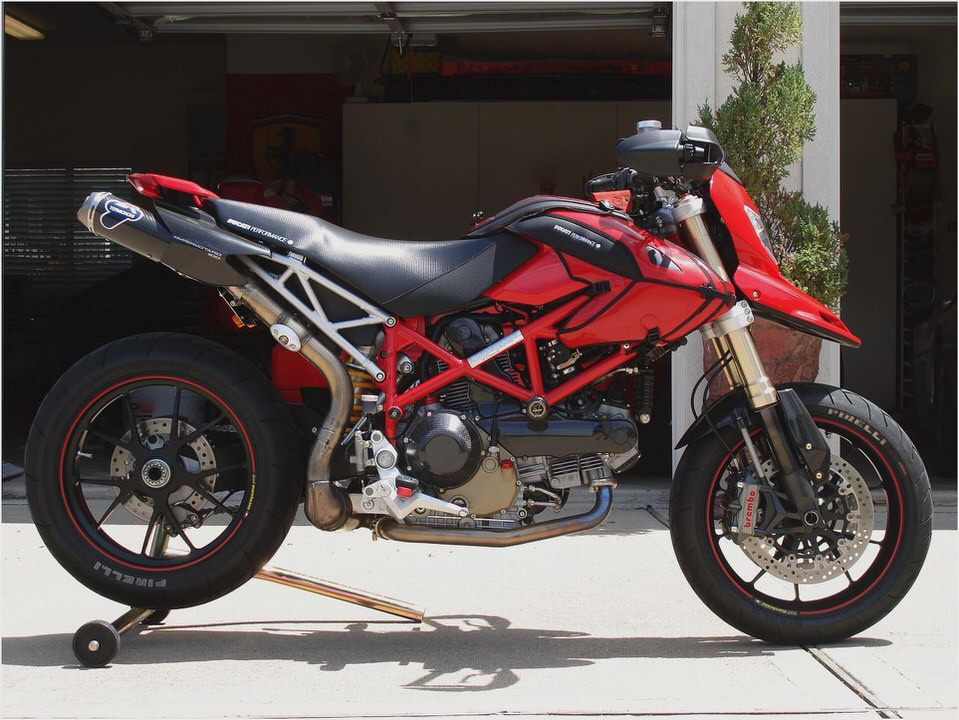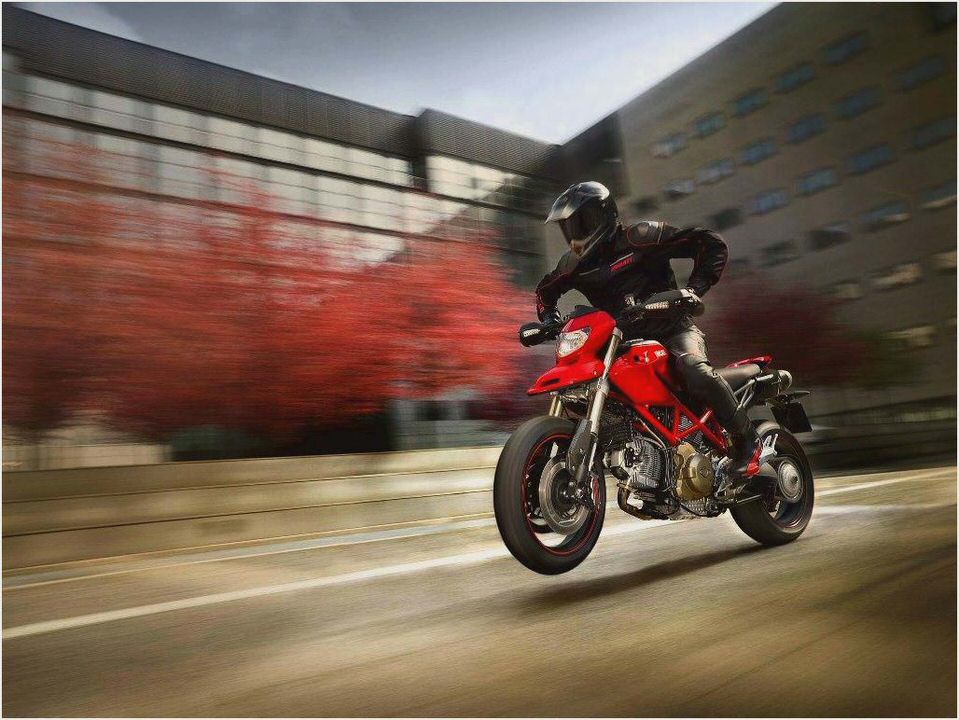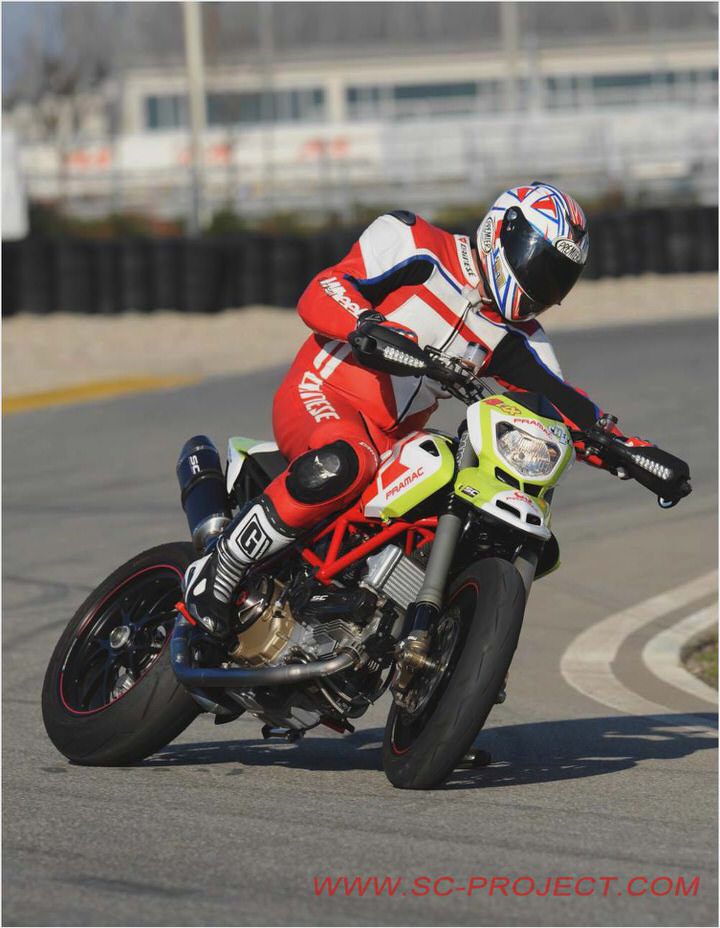
2009 Ducati Monster 1100 Test Ride: Same Hooligan Thrills, Newfound Polish
October 1, 2009 12:00 AM
LOS ANGELES Ducati’s 2009 Monster 1100 follows hard on the heels of the new, second-generation Ducati Monster 696 we rode recentlya machine that put everyone on notice about what Ducati can do when it has enough money and motivation.
The first-generation Monster was developed (way back in 1993) in order to provide the company with an entry-level model that would increase overall sales as much as it might lend impetus to the European naked-bike fad. The Monster quickly became the factory’s bread-and-butter product, easily outselling everything else in Ducati’s model range. That first Monster was a bit of a parts-bin special, using available frames and engines to cut the cost of the gamble.
In contrast, the new Monster was unique from the outset, and that allowed the designers to make important improvements.
As a result, the 696 quickly proved to be light and well-balanced, with nimble handling and an engaging personality. This new 1100 has all of that plus the huge thrust supplied by Ducati’s 1100 cc air-cooled L-twin. After riding it we’re somewhat relieved to hear that Monsters are unlikely to inherit any of Ducati’s even-more-potent liquid-cooled engines this time around; those will likely find homes in the recently unveiled Ducati Street Fighter.
The 1100 engine on the Monster means that the bike lives up to its nameit’s like a motorcycle with a V8. The power’s great, but we wouldn’t encourage Ducati to try to push it much further. Barry Winfield
The Specs
This 1100 version of the new Monster benefits from a 1078 cc engine that has cylinders shared with the Multistrada and Hypermotard models, but with crankcases cast in a new vacuum process that loses about 6.5 pounds of mass. There’s a new Siemens fuel-injection system on the Monster 1100 that uses what Ducati calls combined Alpha-n and speed-density air-measurement technology to improve part-throttle operation. Alpha-n is a dyno-generated airflow model (in the computer) that takes over in circumstances where airflow meters (MAF) tend to err.
Rated at 95 hp at 7500 rpm and 79.5 lb-ft of torque at 6000 rpm, the 1100 is noticeably more muscular than its 696 sibling, capable of second-gear wheelies with just a twist of the grip. The trellis-type frame is borrowed directly from the 696, but there is an all-new aluminum single-side swing arm locating the rear wheel.
A fully adjustable inverted Showa fork is used up front, with a Sachs shock at the rear. That’s on normal 1100 models1100 S-models will wear high-end Öhlins suspension components. Tire sizes are up slightly from the 696, and the Bridgestone BT-016 hoops fitted to the 1100 are 120/70-17 on the front and 180/55-17 on the rear.
A tight-fitting cowl on the rear part of the seat makes the bike look like a monoposto model, but it’s easily removed to accommodate a pillion passenger seat. The same instrument panel we know from the 696 reveals engine speed by way of a liquid-crystal analog arc, and road speed with a typical seven-segment digital readout. It provides trip-computer functions like travel time, air temperature and scheduled maintenance reminders.
Because the new-generation Monster now has a steering-angle range improved to 64 degrees lock-to-lock, it’s much easier to maneuver at low speeds, making it better suited to heavy traffic and confined spaces.
The Ride
Throttle response from this big twin is immediate, maybe even abrupt until you learn to be delicate with your right hand. And the relative lack of flywheel mass just exacerbates this hair-trigger sensitivity. Until the 1100 is properly warm, the part-throttle operation is actually a little ragged, but it improves considerably once the engine is up to normal operating temperature.
Thereafter, there’s plenty of urge at almost any engine speed to move the bike along, but one is discouraged from using the abundant torque below 4000 rpm because of the fairly intense low-frequency vibes at those speeds.


The big L-twin smooths out beautifully above four grand, providing a full 4000-rpm band of fluid power to play with, and you soon learn to keep the engine in this sweet spot. The only problem is riding on normal suburban streets, where you find yourself holding the bike in fourth or even third gear to quell the shakes. That’s probably not the best way to stretch a gallon of gas.
Two aluminum exhaust canisters project from under the seat, and they’re equipped with an electronically operated valve to control noise at low engine speeds. We found the noise levels to be perfectly acceptableeasily audible and entertaining to the rider, yet somewhat muted to the bystanders. The only surprise was a fairly emphatic growl on overrun, which reminded me strongly of my neighbor’s very loud Monster, in character if not in outright sound intensity.
Like all Ducatis, the Monster 1100 has profuse mechanical presence, and it is effortless to ride from the very first outing. The hydraulic clutch has a light action, and the transmission shifts fluently, allowing easy coordination and almost seamless transitions. The inverted front Showa fork and Sachs rear shock (controlling the single-side swing arm) provide generous travel and remarkably good damping.
Sitting a little higher than its smaller 696 sibling (seat height is 31.9 in. versus 30.3), the 1100 suffers much less from foot-peg touchdown when leaning through corners on our favorite canyon road, allowing a rider to explore the handling envelope with much less apprehension. Tall riders may find the seat less than optimalit forms a bowl from which you can’t easily move.
The riding position is otherwise completely in character with the bike. Despite the tapered aluminum handlebar being longer and a little higher than the old Monster, it puts the rider in a slightly crouched position, where it is much easier to tolerate the force of the wind at high cruising speeds. It’s a good compromise between comfort and the sense of control needed for fast cornering.
There are Brembo brakes at both wheels. The front wheel, which obviously does the lion’s share of the work, has two radial-mount calipers powered by a radial master cylinder at the lever. The system clamps two 12.6-in. rotors, so there’s plenty of speed-shedding power.
Better yet, the lever is an easy pull and has plenty of feel.
The Bottom Line
Although the Monster 1100 is completely new, it maintains the charming hooligan persona of the Monster S2R it replaces, with a veneer of refinement the old bike lacked. It is bound to be popular with riders looking for the combination of street presence, speed, handling and versatility that has made the Monster Ducati’s top-selling line. At $11,995, the price is enough to deter dilettantes, but it’s unlikely to discourage the Ducatisti, for whom the baritone sound of the L-twin engines and the extrovert styling are irresistible.

- First Ride Reports: Ducati Hypermotard 796 [UPDATED] Ducati News Today
- Ducati 999R – webBikeWorld
- Ducati Hypermotard 1100 Evo review – Telegraph
- Ducati Art: Troy Bayliss Collection – Ultimate MotorCycling
- Ducati 1199 Panigale S Senna Limited Edition Paatak.com

